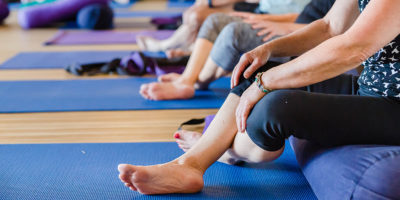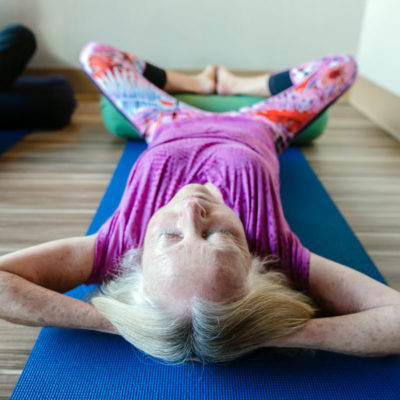Before you carry out your next exercise routine, or perhaps while you are experiencing it, consider the difference between fitness and health.
Yes, there’s a difference and we often unwittingly take up the former in pursuit of the latter. Many have accomplished “lots of fitness” at the not-so-obvious cost of diminished health. We use the term “exercise” to describe the activity that moves us toward one or the other—fitness or health. Quite simply, exercise is the process of challenging the body with the notion that that which is challenged is made better. If nothing in the body is challenged it’s eventually lost—you know, “use it or lose it.” And so we exercise or pursue some activity in the name of either health or fitness thinking they are the same—usually under the assumption that if a little is good, more is better.
 Equipped with this information, the savvy individual might ask, “How do I challenge my body to move toward the greatest degree of health in the safest, most effective way?” Further, “How do I exercise, and meet my body exactly where it is today and put my goals of fitness aside.” Why? Because fitness implies a certain outer look or degree of accomplishment. If either of these two ego-values (outer look or accomplishment) are part of the plan then the next step will be a setup for future failure, if not in the near term, then almost certainly in the longterm because “the look and accomplishment” pushes the body in premature, unnatural and harmful ways. We fall so easily into the fitness trap because it’s a paradigm that’s been ingrained in us throughout our lifetimes. We’re driven by external images (often of those who have a unique physical constitution that is predisposed to “the look” and the ability, but that’s another story) and not by what we intuitively feel on the inside. Very few people are predisposed to the consummate look and accomplishment, and yet the allure of images are pervasive in our culture. One picture can influence thousands of minds. The “fitness paradigm” conditions the mind for goals that are damaging to many and unattainable to most. Those who can will go to great lengths to create more demanding methods to achieve more fantastic achievements—and so the ego traps us in deepening cycles of increasing demand motivated by external feedback.
Equipped with this information, the savvy individual might ask, “How do I challenge my body to move toward the greatest degree of health in the safest, most effective way?” Further, “How do I exercise, and meet my body exactly where it is today and put my goals of fitness aside.” Why? Because fitness implies a certain outer look or degree of accomplishment. If either of these two ego-values (outer look or accomplishment) are part of the plan then the next step will be a setup for future failure, if not in the near term, then almost certainly in the longterm because “the look and accomplishment” pushes the body in premature, unnatural and harmful ways. We fall so easily into the fitness trap because it’s a paradigm that’s been ingrained in us throughout our lifetimes. We’re driven by external images (often of those who have a unique physical constitution that is predisposed to “the look” and the ability, but that’s another story) and not by what we intuitively feel on the inside. Very few people are predisposed to the consummate look and accomplishment, and yet the allure of images are pervasive in our culture. One picture can influence thousands of minds. The “fitness paradigm” conditions the mind for goals that are damaging to many and unattainable to most. Those who can will go to great lengths to create more demanding methods to achieve more fantastic achievements—and so the ego traps us in deepening cycles of increasing demand motivated by external feedback.
Ask the question again: Given my desire for improved health, how do I meet my body exactly where it is today and establish the best starting point for my health and wellness program?
The answer is within, but we need some help finding it, especially in the beginning. In truth, the question and the answer are always in the same place.
It’s our higher yoga to learn this—to stop the outer seeking and start finding, within.
The moment we set our sights on a certain outer look or accomplishment, we stop listening to the body and the mind’s deeper cues. We get in our own way. We become outer oriented and forget to listen—so much so that we’ll chase the outer goals regardless of the inner cost. For paid professionals, it may be worth it but eventually the price is paid, usually in the form of acute or chronic (and often hidden) injury. You see, the body will do everything within its power (right or wrong, good or bad, healthy or unhealthy) to help you accomplish your goal. It always has, and it always will because goals (conscious of them or not) are always set in advance. Whether a couch potato or a world class triathlete, the body constantly organizes and reorganizes around the things you ask of it. No matter what the cost, the body will adapt, inside and out to the things you ask of it. This is the process and the physiology that we leverage in Avita Yoga.
Considering ALL the remaining years of your life, would you rather be able to:
Run a marathon or walk to the grocery store and cook your own food?
Put your foot behind your head or get dressed each morning without assistance?
The means must correspond with the end. Said differently, our short-term goals must coincide with our longterm goals, and few consider the difference let alone adjust their mindset so that they are aligned.
I’ve given you a lot of food for thought and I’d like to leave you here for a little while. Ask the questions and see what internal answers arise. There’s no need to stop doing the things you enjoy! Just be sure you are doing them for the right reasons, and “for the fun of it” is a good enough reason.
Stay tuned for part II when we dive deeper into the three most helpful inner messengers to managing your exercise health program: Breath, pain and sensation.
Remember, the answer is within. Ask the questions and wait, listen for the answer and it will come.

